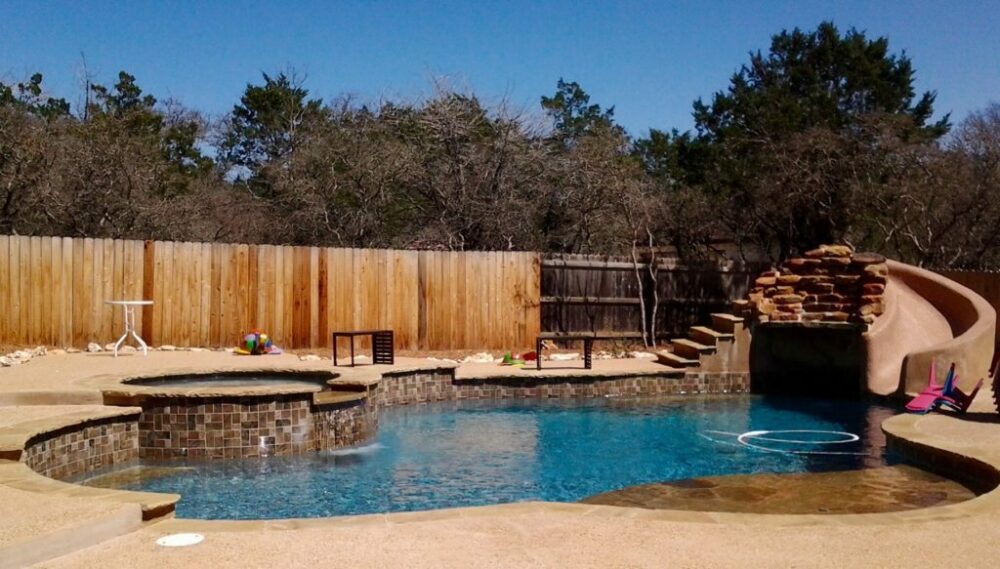The Impact of Pool Plaster Color on Water Temperature
When it comes to constructing and maintaining your dream pool, every detail matters – even those you might not immediately consider, like the color of your pool’s plaster. At Wimberley Pools and Spas, we understand the nuanced effects that plaster color can have on the overall swimming experience, including its impact on pool water temperature.

Plaster Color and Heat Absorption
The primary way that plaster color influences water temperature is through heat absorption. Dark colors absorb more heat than light colors. This phenomenon is not exclusive to pools; it’s the same reason why wearing a black shirt on a hot summer day feels warmer than wearing a white one.
When applied to pool plaster, this principle means that a darker finish will absorb more of the sun’s heat, subsequently warming the water. On the other hand, a lighter-colored plaster will reflect more sunlight, keeping the water comparatively cooler.
Consider Your Climate
The influence of plaster color on water temperature is especially important to consider in relation to your local climate. If you live in a hotter region and prefer a refreshing, cool swim, a lighter plaster color might be the optimal choice. Conversely, those in cooler climates or who enjoy warmer water might benefit from a darker plaster color to naturally raise the water temperature.
Other Factors to Consider
While plaster color does impact water temperature, it’s essential to understand that other factors play a significant role as well. Pool size and depth, amount of sunlight exposure, surrounding landscape, and use of pool heaters or covers can also affect water temperature. It’s important to consider all these aspects in concert when making decisions about your pool design.
Choosing the Right Plaster Color for You
At Wimberley Pools and Spas, we offer a broad range of plaster colors, from traditional whites and beiges to modern shades of blue and grey, and even striking dark hues. When choosing the right plaster color for your pool, you should consider not only aesthetic preferences but also practical factors like heat absorption.
A key benefit of this factor is that it can help improve energy efficiency. If you prefer warmer pool water and live in a sunny climate, choosing a darker plaster color can help reduce the need for a pool heater. Similarly, if cooler pool water is your preference, a lighter plaster might be the way to go.
The design of your pool should be a reflection of your personal style, but also take into consideration factors such as maintenance, longevity, and yes, even water temperature. With a variety of plaster colors available, you can achieve the perfect balance between form and function for an optimal swimming experience. Remember, our team at Wimberley Pools and Spas is always ready to guide you through these important decisions, ensuring your pool is as comfortable as it is beautiful. Contact us today!
